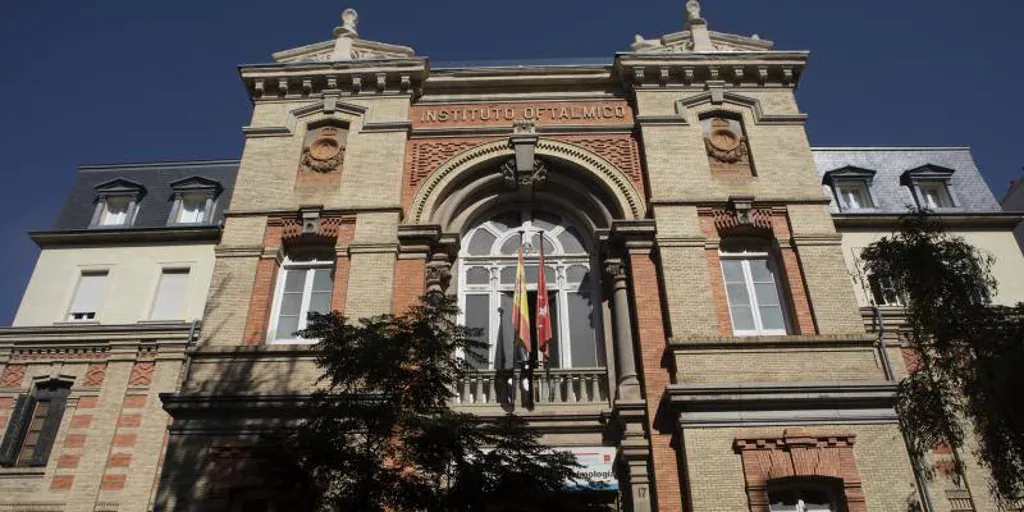For 120 years, a mansion in the heart of the Chamberí neighborhood has guarded the gaze of hundreds of thousands of Madrid residents every year. It is a listed building, full of 19th century atmosphere, but the most modern techniques are applied every day to solve the problems of adults and children. It was born under the will of a tenacious doctor and a caring queen, and received its present headquarters thanks to the generosity of a philanthropist.then he continued Provincial Eye Research Institute Affiliated to the Gregorio Marañon Hospital, located in one of the best locations in the capital, it performs approximately 130 surgeries per week and cares for 300 patients per day.
The first promoter of eye care for the people of Madrid is the doctor Francisco Delgado JuiceYears of work dedicated to “helping the visually impaired”, as Blanco y Negro defined it at the beginning of the 20th century. He was the first director of the institute, founded in 1872 by Queen Maria Victoria and named “Asilo de Amadeo” after her husband the king.
Its headquarters changed over the years until funds were obtained to build the final headquarters at 17 General Alando Street. It was built thanks to a donation from Francisco de las Herrerías y el Arco, At that time 900,000 pesetas were spent on charity. Dr. Santa Cruz, then director of the Institute of Ophthalmology, convinced the administrator of the estate, Juan Nicolás de Acha y Cerragería, to allocate funds to the institution: King Alfonso XIII and Victoria Eugenia in 1903 The institution was unveiled. Their faces were carved into the two rose windows on the main facade of the sculpture, which were carefully crushed and maintained.
It was designed by the architect José Urioste y Velada, whose works include, among others, the monumental gates of Retiro. Although 120 years have passed, the now protected heritage still retains all the flavor of the 19th century, treating 6,000 patients per month and performing 500 surgeries using the most modern technology.
past and present
The institute building, protected for its architectural value, retains its original elements while receiving hundreds of thousands of patients every year who are treated with the most modern technologies,
900,000 pesetas
Beginning in the late 19th century, a philanthropist donated approximately 900,000 pesetas, which eventually became this eye institute.
old and new ailments
When it opens, the most common diseases are myopia or conjunctivitis. Now, people are worried about macular degeneration.
This is summed up graphically by current director Dr. José María Urcelay, director of the Department of Ophthalmology at Gregorio Marañón Hospital. “This building keeps pace with the radical changes in ophthalmology.” A branch of medicine that is undergoing a technological revolution. When it was first established, the center provided 100 beds for patients, who often needed to be hospitalized for long periods of time. He himself remembers that when MIR first started, “cataract surgery meant being hospitalized for a week and not being able to leave the bed for the first 24 hours, with the eyes covered. Now, however, those who have had the surgery have a higher risk within a few hours of the intervention. Just left, their eyes hanging in the air.
international premiere
Cataracts can now be operated on using ultrasound. In the institute they preserve the first machine of this type, phacoemulsification machine, Its inventor was the ophthalmologist Kelman, who came from New York to the Madrid Eye Institute, where he first introduced it in the 1970s. However, his machine failed due to some technical glitches and had to be improved, but the system continues to be used.
The institute is now a day hospital, with working hours from 8 am to 10 pm, and the admission rooms have been converted into consultation rooms, outpatient surgery rooms or testing rooms. Between 1917 and 1956, the only two female doctors who remain in history are Elisa Soriano and Pilar Sanz Ferrer. Now, of the 200 employees, 50 are doctors and the majority are women.
Pictured above is an examination room at the Eye Institute. Bottom left, former conference room, now a museum.On the right is Dr. Urcelay, Director of Ophthalmology Department, Gregorio Marañón
The institute has shifted from treating primarily myopia, conjunctivitis or astigmatism to focusing on the growing problem of macular degeneration, treating 40 cases a day and diagnosing five new cases every day.
The building moved from being dependent on the Ministry of Interior to the Autonomous Community of Madrid when health responsibilities were transferred to the building; at that time he was director of the branch Socialist Pedro Sabando, Visit the institute now as a patient. The center was affiliated with Gregorio Marañón and became its ophthalmology unit. The only center to be located outside a hospital, a decision that was not understood at the time but was later adopted by other centers. In fact, the institute has complete autonomy, allowing it to be fully efficient during the pandemic, while treatments and surgeries continue.
unique work
Press reports from the time stated that in 1904, its first full year of operation, 3,350 patients were registered and 561 operations were performed. In 1913, 6,270 people were admitted to hospital and 928 underwent surgery. Now, they capture data on about 130 surgeries per week and 300 patients per day. Moreover, it is very difficult to work in a protected building, where almost no elements are accessible. that’s why, maintain its huge ceilingbeautiful mosaic floors, as well as some unique rooms such as the chapel or the old operating room, now an auditorium, whose floor was saved through the will and effort of the cleaning staff, who did a huge job restoring it from scratches Cover it with carpet and glue underneath.
The conference room, now a museum, preserves wooden boxes containing old surgical instruments; an eye adorns a wooden display case in the library. All this meets healthcare and technology needs: laser testing, tomography or imaging diagnostic equipment.

